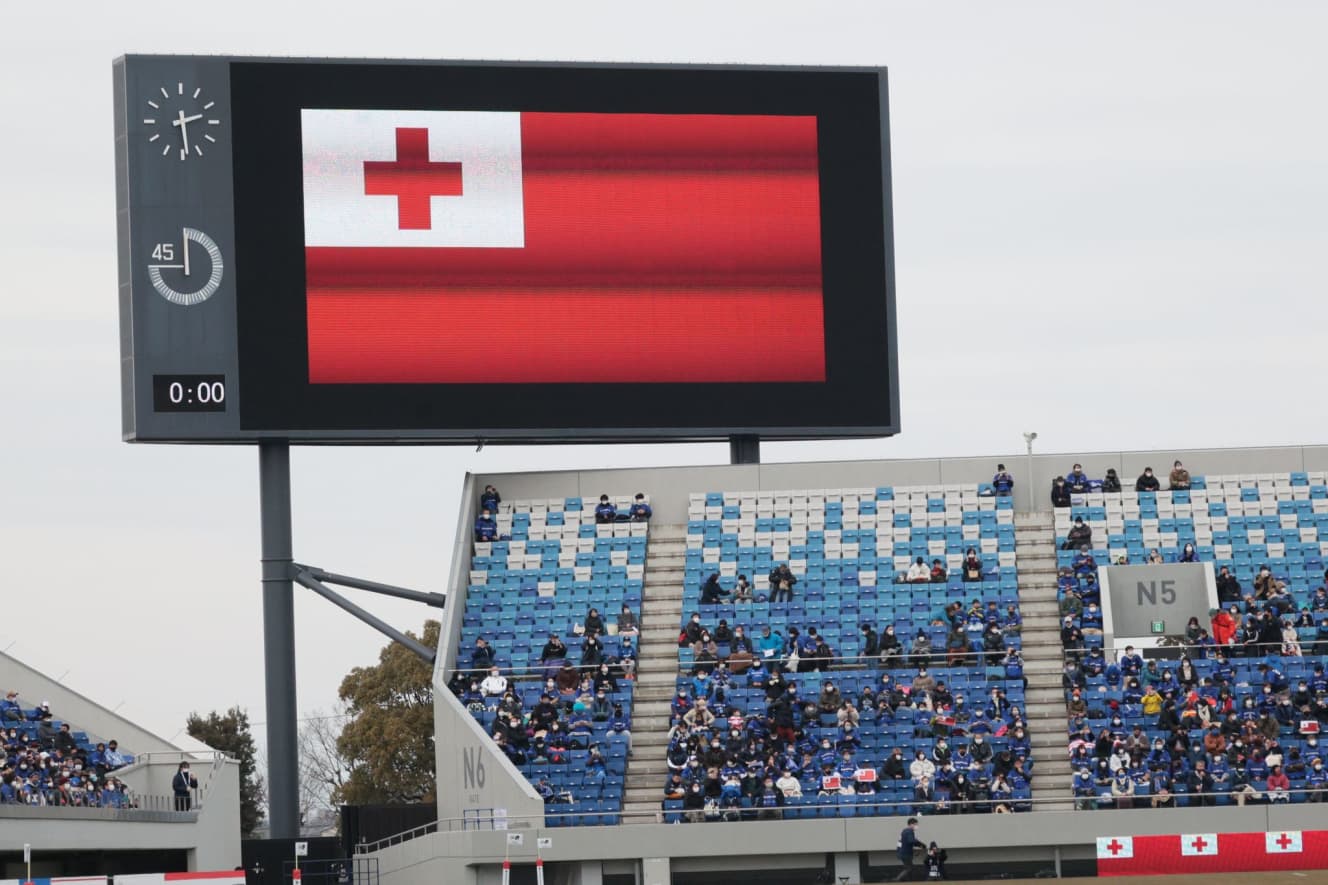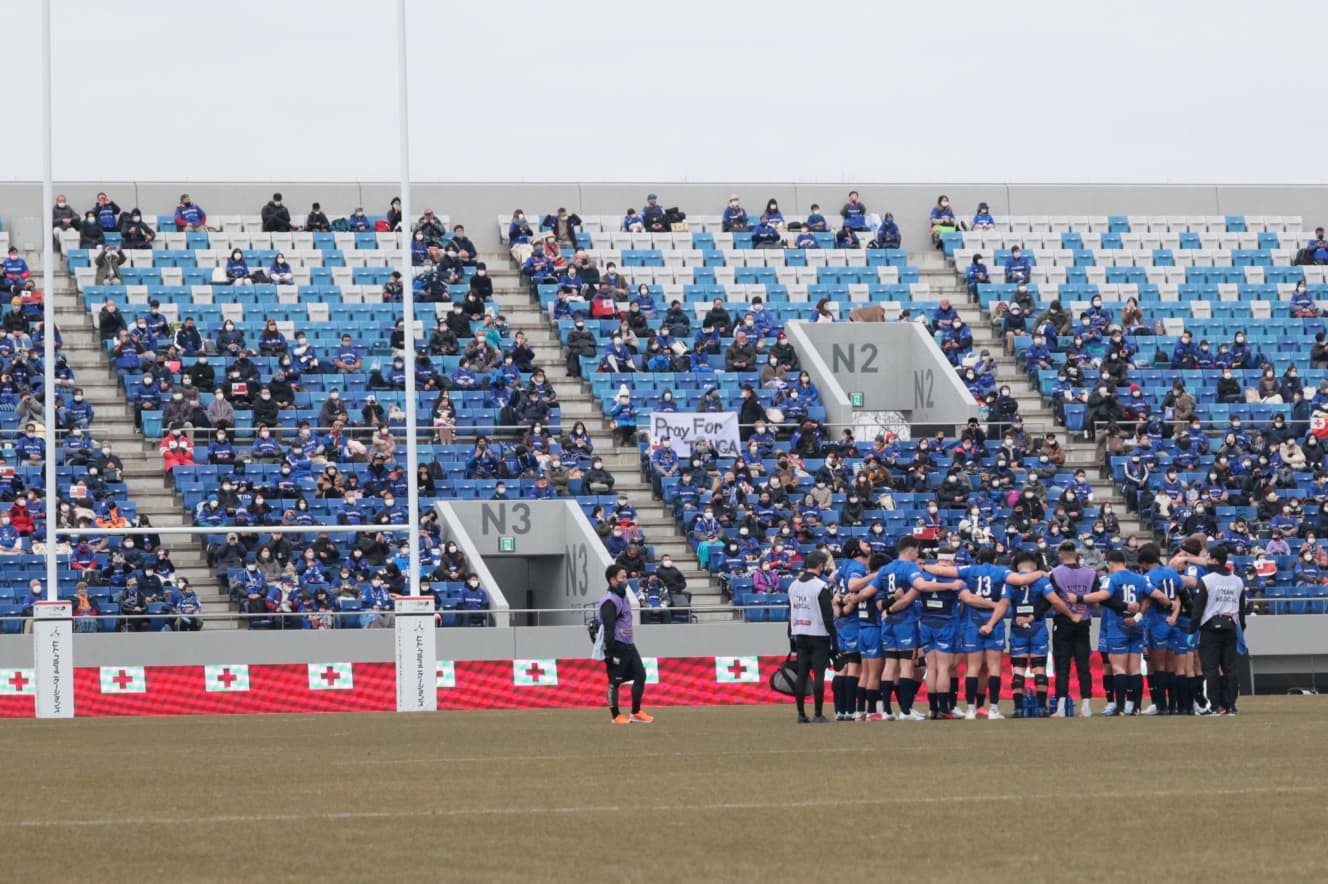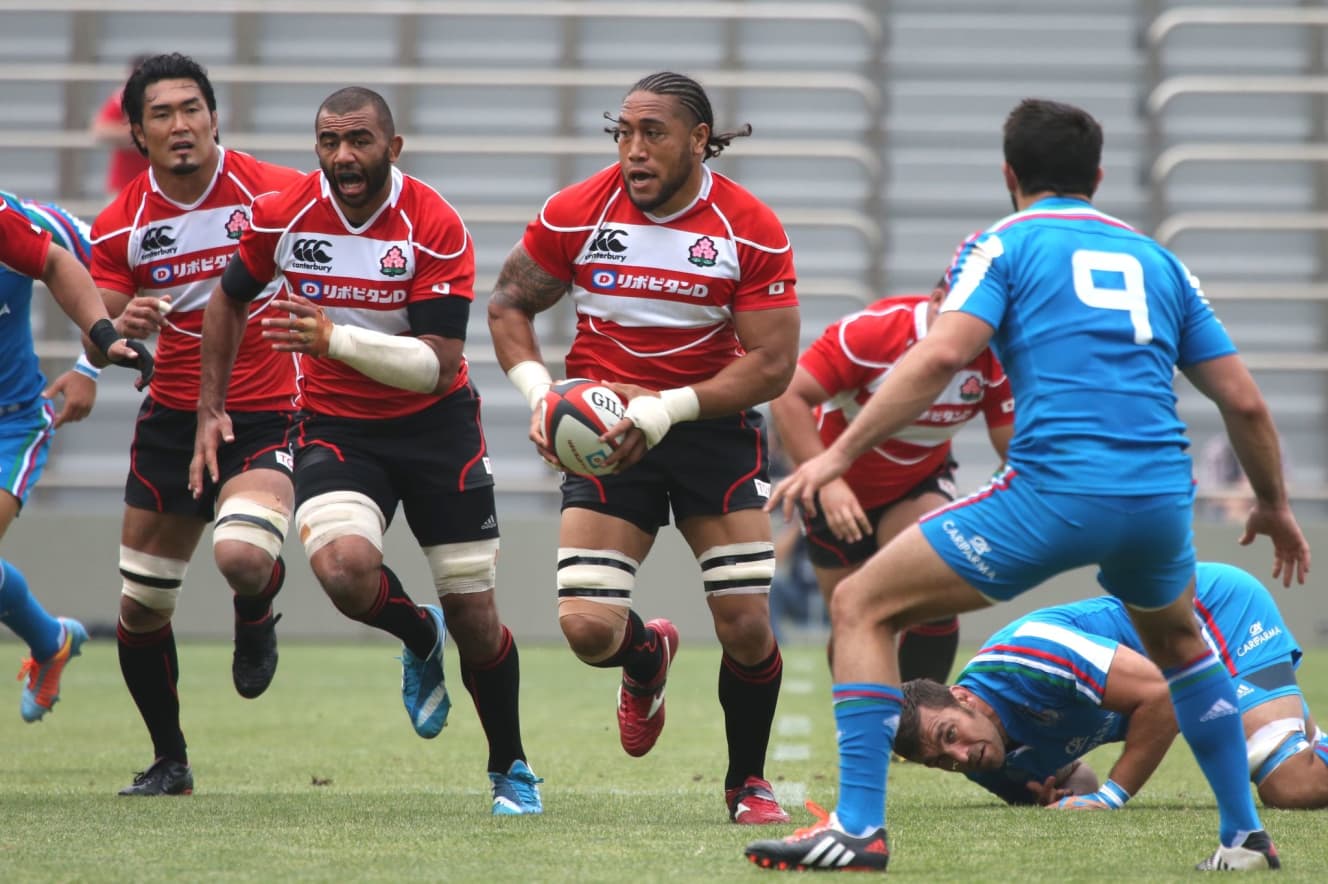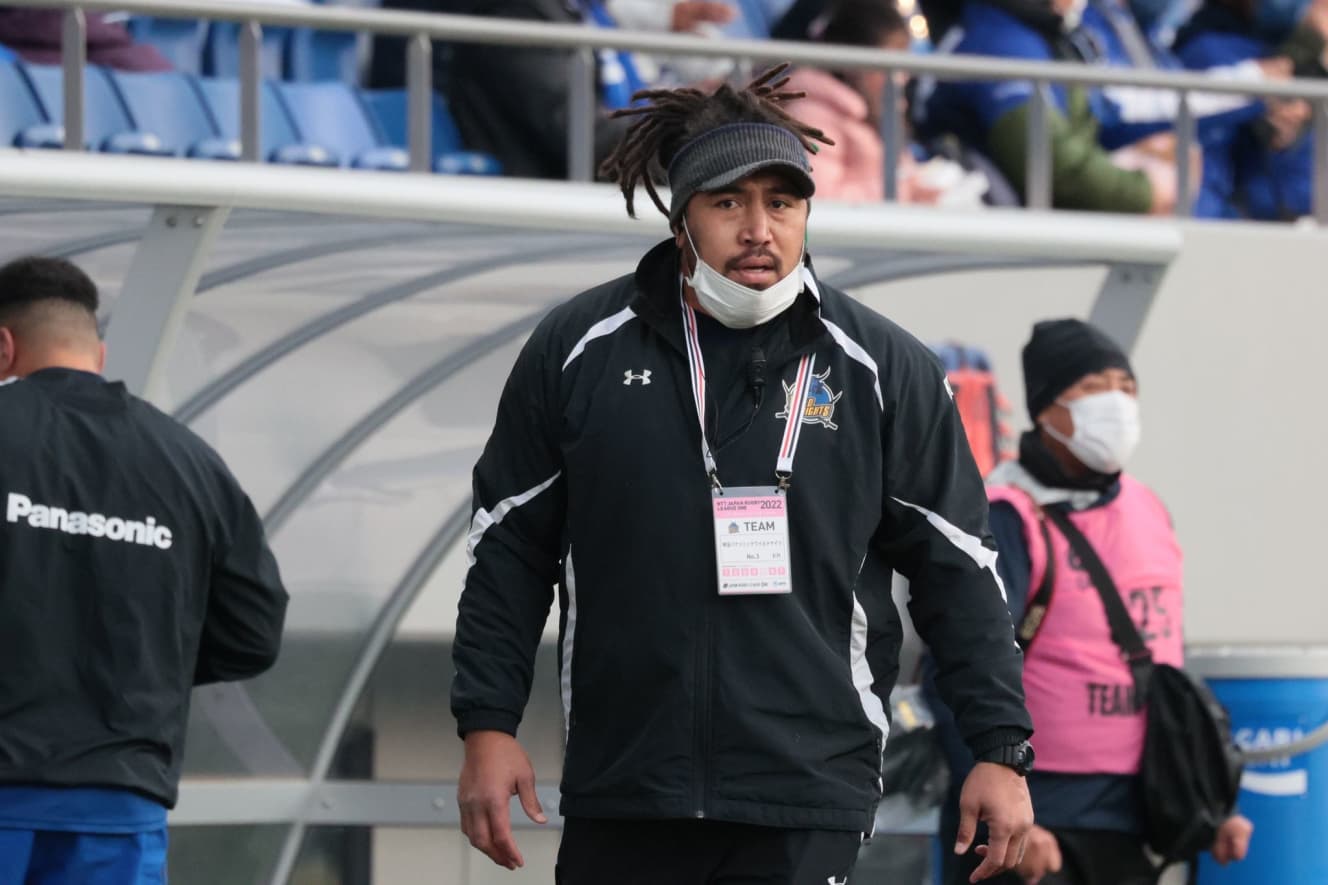Former Japanese National Rugby Team Member from Tonga Disheartened About What Corona Did to Japan!

On January 15, a major undersea eruption occurred on the ocean floor near Tonga, a small island nation in the South Pacific with a population of about 100,000. One of the people who was in Japan and learned of the news on the TV news was Koriniasi Khorani Ryu, aka “Corey-san,” who is a coach for the Saitama Panasonic Wild Knights.
During his active career, he was a dynamic, 188-cm, 110-kg giant of a No. 8. When he was in Tonga, his late mother forbade him to play rugby, and he played the trombone in a brass band. He started playing rugby after entering Saitama Institute of Technology Fukaya (now Seochi Fukaya) and coming to Japan. He has played for the Wild Knights since his days at Sanyo Denki, became a Japanese citizen in 2007, and has played in the 2011 and 2015 Rugby World Cups, and has 45 caps for the Japanese national team.
When I saw the news of the eruption, I was surprised! He immediately called his 87-year-old grandmother, Tinarasa, who lives in Nuku’alofa, the capital of Tongatapu Island, but the call went unanswered.
The island of Hunga Tonga-Haapai, where the eruption occurred, used to have a lake and was “like a hole in the ground for locals to visit,” although it was not a tourist spot, according to Horani.
Holani’s wife, Riiko, a former professional volleyball player, is also half Japanese and half Tongan, and her wife’s relatives lived in the Ha’apai Islands, closer to the erupted island than Nuku’alofa, but again, contact with them remained lost. Horani asked his cousin, PR Sri Ashitr, who plays for the Wild Knights, “Did you get in touch?” The only thing we could do was to check with each other.
We couldn’t do anything but pray. It was frustrating. ……” While the days of anxiety continued, “I was glad that everyone was worried about me, and the connection between Japanese and Tongan rugby was reassuring,” said Holani, who spoke of the heartwarming actions of Japanese rugby fans.
At the League One match the day after the eruption, a Tongan flag waved in the stands to show solidarity between Tonga and Japan, triggered by a call from fans on social media. Eight days after the eruption, on January 23, at the Kumagaya Rugby Ground, the Wild Knights’ opening game due to Korona, a call for donations for Tongan relief was made, and before the game, a large Tongan flag was displayed on the screen and a moment of silence was offered for the victims.
The circle of support for Tonga continued to expand. Suntory Holdings and Canon, both of which have Tongans on their rugby teams, decided to donate 10 million yen, Toyota Verblitz donated all sales of some of its merchandise, and NEC Green Rockets TOKATSU and Hino Red Dolphins sold charity goods. Donation drives were held at various locations with ties to Tonga, including Kochi Prefecture, where Tonga held a training camp prior to the 2019 World Cup; Shimabara City, Nagasaki Prefecture, where the team camped; Shochi Fukaya, Horani’s alma mater; and Saitama Institute of Technology.


It was not until about 20 days after the eruption that Holani, who could only worry, finally got in touch with her grandmother.
I was just glad there was life,” she said. I was so relieved.”
There were no human casualties among Horani’s relatives and his wife’s relatives. However, the tsunami reached under the floor of Horani’s parents’ house, which is about 10 minutes from the sea, forcing them to evacuate inland for three weeks, and some of his wife’s relatives are still living in tents.
In some places, tsunamis of 15 meters or more hit, but it is the large amount of volcanic ash that is currently having the greatest impact, as Horani says, “It’s piling up by about 10 cm.
In Tonga, rainwater is generally stored and used for domestic use, but the volcanic ash has made it undrinkable, and crops such as taro and yams, the staple foods, have been severely damaged. Currently, they are in the process of removing the hardened volcanic ash while receiving assistance from many countries including Australia and New Zealand, including Japan.
However, it is not only the damage caused by the eruption that is currently affecting Tonga. Previously, there was only one positive case of the new coronavirus, but as Holani says, “We have more things to worry about,” and the coronavirus epidemic has begun in Tonga, with the number of positive cases exceeding 300 on some days in March. Therefore, a lockdown is currently in place, and Tonga is indeed suffering from a double whammy with the damage caused by the eruption.
Before the corona disaster, Holani used to return to Tonga once a year with his family, but he has not been able to return once since the spring of 2019. She said, “Once things settle down, I hope to send them what they need there, and I can’t wait to go to Tonga and see my grandma!” I told him. But the reality is that it will take a little more time for that to happen.
Although he does not know when he will be able to see his grandmother in Tonga, he is able to spend his time without feeling anxious because of the many Tongan rugger players who are in Japan. The history of Tongan-Japanese rugby ties spans more than 40 years, including a relationship that Horani says he has nothing but gratitude for.
It first began when Holani’s uncle, Nofomuri Taumoefolau, and others enrolled at Daito Bunka University in 1981 to study abacus. These days, however, rugby study abroad is the main focus. Nofomuri was one of the first Tongan players to join Sanyo Denki, and was the first foreigner to represent Japan, and was also a wing who played in the first Rugby World Cup in 1987, scoring a try.

The reason for Horani’s visit to Japan was, of course, his uncle. Holani said, “Most of the teams in League One have Tongans on them, and if you include high schools and universities, there are probably enough Tongans to make five teams.” As he says, the number of Tongans playing in Japan has continued to increase since then.
Currently, Meguro Gakuin, Japan Aviation Ishikawa, Sapporo Yamanote, Kochi Chuo, Tokai University Fukuoka, Daito Bunka University, Ryutsu Keizai University, Setsunan University, Hanazono University, and other universities have accepted Tongan students, who have continued to play in Japan as university and League One players.
Also at the 2019 World Cup, PR Nakajima Isireli (Kobelco Kobe Steelers), PR Valuasaeri Ai (Saitama Wild Knights), NO8 Amanaki Lelei Mafi (Yokohama Canon Eagles), and WTB Ataata Moeakiola (Kobe S ), who played in Japan from high school and university, are The team represented Japan and contributed to the top eight for the first time.
According to the Ministry of Foreign Affairs website, there are 174 Tongans in Japan (as of June 2020), and as it is estimated that many of them are involved in rugby, the connection between Japan and Tonga in rugby is deep and strong.
Although there is not much time right now due to the rugby season, Horani said, “After the season is over, I would like to do something with all Tongans. I have a desire to bring something necessary to Tonga at that time. (I’m thinking of things like high-pressure cleaners (to remove volcanic ash ),” he said.
Holani is now devoting his time to coaching the Wild Knights, based in Kumagaya City, Saitama Prefecture . I’ve been trying to revive the defensively strong Wild Knights since last season, and things are looking good right now.” Feeling a strong connection and bond with Japan, Horani is thinking of his distant homeland in the South Pacific, and is striving to become the first champion of League One, which began this season.

Interview and text: Kenjin Saito
Born in 1975. Sportswriter who covers and writes for magazines and websites, focusing on rugby and soccer. He has covered the World Cup for five consecutive tournaments until the 2019 tournament. He covered all 57 matches of the last World Cup, when Japan was coached by Eddie Jones. His recent books include "Rugby Language Dictionary" (Seibundo Shinkosha) and "Introduction to Rugby Spectatorship" (Kairyusha). In his high school days, he played as a FB who was good at tackling.